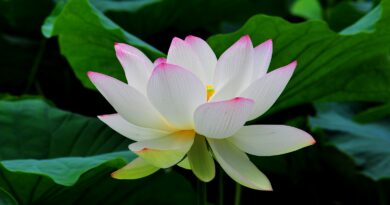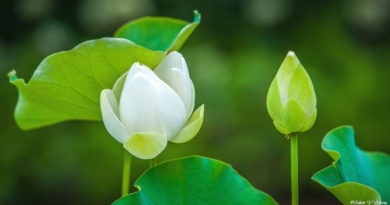THE JHĀNAS AND THE LAY DISCIPLE ACCORDING TO THE PĀLI SUTTAS – PART II: JHĀNA AND RIGHT CONCENTRATION
THE JHĀNAS AND THE LAY DISCIPLE ACCORDING TO THE PĀLI SUTTAS – PART II: JHĀNA AND RIGHT CONCENTRATION
Though the above discussion seems to imply that the path of stream-entry might be reached without prior attainment of jhāna, the thesis that jhāna is necessary at every stage of enlightenment claims powerful support from the canonical account of the Noble Eightfold Path, which defines the path factor of right concentration (sammā samādhi) with the stock formula for the four jhānas.[20] From this definition it might be argued that since right concentration is integral to the path, and since the jhānas form the content of right concentration, the jhānas are indispensable from the first stage of awakening to the last.
This conclusion, however, does not necessarily follow. Even if we agree that the definition of right concentration by way of the jhānas categorically means that the jhānas must be reached in the course of developing the path, this need not be taken to stipulate that they must be attained prior to attaining stream-entry. It could be that attainment of jhāna is necessary to complete the development of the path, becoming mandatory at a relatively late point in the disciple’s progress. That is, it may be a prerequisite for reaching one of the higher paths and fruits, but may not be indispensable for reaching the first path and fruit. The Theravāda exegetical system found in the Pāli Commentaries handles this issue in a different way. Based on the Abhidhamma’s classification of states of consciousness, the Commentaries distinguish two kinds of path: the preliminary (pubbabhāga) or mundane (lokiya) path and the supramundane (lokuttara) path.[21] Two kinds of jhānas, mundane and supramundane, correspond to these two kinds of path. The mundane jhānas are exalted states of consciousness (mahaggata-citta) developed in the preliminary path, as a preparation for reaching the supramundane path; technically, they are “form-sphere” states of consciousness (rūpāvacara-citta), that is, types of consciousness typical of the “form realm” and tending to rebirth in the form realm. The supramundane jhānas are supramundane states of consciousness (lokuttara-citta) identical with the supramundane paths or fruits themselves.
This distinction allows the Commentaries to hold simultaneously two theses regarding the relation of jhāna to the path: (i) every path and fruition attainment, from the stage of stream-entry up, is also a jhāna, and thus all path-attainers are attainers of supramundane jhāna; (ii) not all path-attainers have reached jhāna in the preliminary path leading up to the supramundane path, and thus they need not be attainers of mundane (or form-sphere) jhāna. These two theses can be reconciled because the paths and fruits always occur at a level of concentration corresponding to one of the four jhānas and thus may be considered jhānas in their own right, though jhānas of the supramundane rather than mundane type. These jhānas are quite distinct from the mundane jhānas, the exalted states of concentration pertaining to the form-sphere (rūpāvacara). As all path-attainers necessarily attain supramundane jhāna, they fulfil the definition of right concentration in the Noble Eightfold Path, but they may not have attained the form-sphere jhānas prior to reaching the path. Those who do not attain jhāna develop a lower degree of concentration (called access concentration, upacāra-samādhi) which they use as a basis to arouse insight and thereby reach the supramundane path. When those meditators who arouse insight without prior attainment of jhāna reach the supramundane path, their path attainment occurs at the level of the first supramundane jhāna. Those who have already cultivated the mundane jhānas prior to attaining the path, it is said, generally attain a path that occurs at a jhānic level corresponding to their degree of achievement in the practice of the mundane jhānas.[22]
Though the Nikāyas do not clearly distinguish the two types of paths and jhānas, several suttas foreshadow this distinction, the most prominent among them being the Mahācattārīsaka Sutta.[23] The distinction becomes explicit in the Abhidhamma, where it is used as a basis for the definitions of the form-sphere and supramundane wholesome states of consciousness. The Commentaries go one step further and adopt this distinction as foundational to their entire method of exegesis. Although one is certainly not justified in reading the interpretative concepts of the Commentaries into the canonical texts themselves, since the Commentaries feel obliged to explain the definition of right concentration as the four jhānas in a way that does not imply all path-attainers possess the form-sphere jhānas, this makes it plain that they did not regard the form-sphere jhānas as a prerequisite for attaining the path of stream-entry.
Notes:
20. For example, at DN II 313 and SN V 10.
21. The distinction is found already in Dhs, in its analysis of the classes of wholesome consciousness pertaining to the sphere of form and the supramundane types of wholesome consciousness. See too the Jhāna-vibhaṅga (Abhidhamma-bhājanīya) of Vibh.
22. See Vism XXI, 112-16.
23. MN No. 117. In this sutta the Buddha distinguishes five of the path factors, from right view through right livelihood, into two kinds, one “connected with taints, partaking of merit, ripening in the aggregates” (sāsava puññabhāgiya upadhivepakka), the other “noble, taintless, supramundane, a factor of the path” (ariya anāsava lokuttara maggaṅga). “Noble right concentration with its supports and requisites” (ariya sammā samādhi sa-upanisa sa-parikkhāra) is mental one-pointedness equipped with the other seven factors in their noble, supramundane dimension. If the latter is understood to be supramundane jhāna, then we might suppose the jhānas usually described in the training of the disciple are “connected with taints, partaking of merit, ripening in the aggregates.” The texts never describe the jhānas in quite these terms, but some suttas imply their attainment leads only to a higher rebirth without necessarily conducing to deliverance. See note 39 below.







